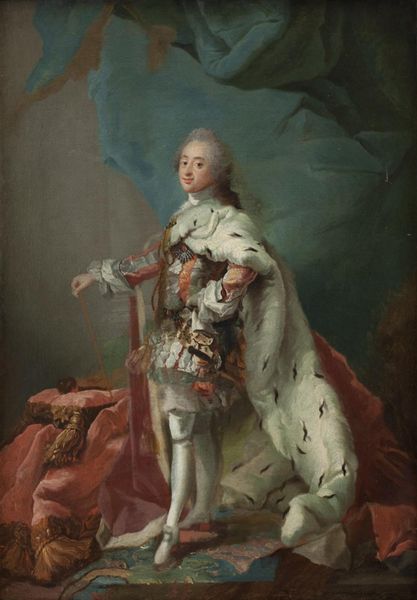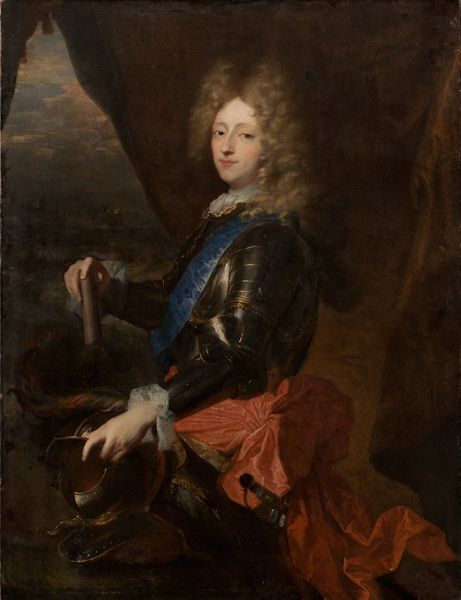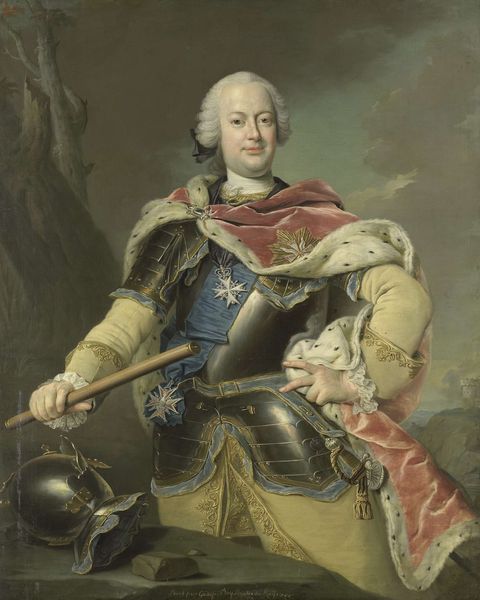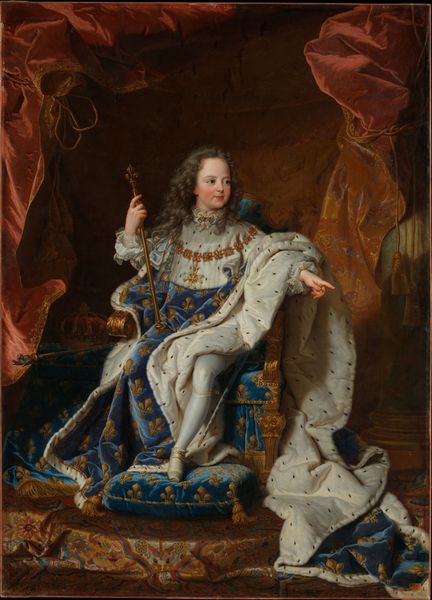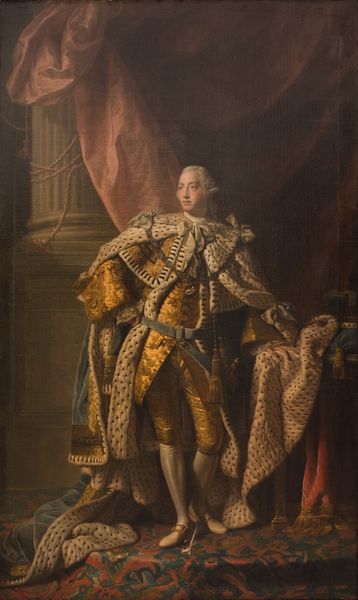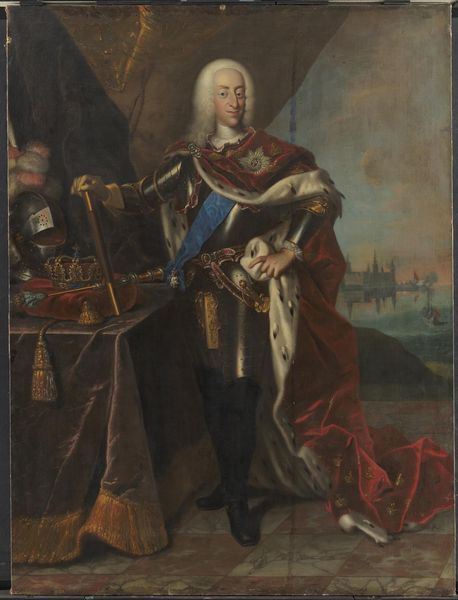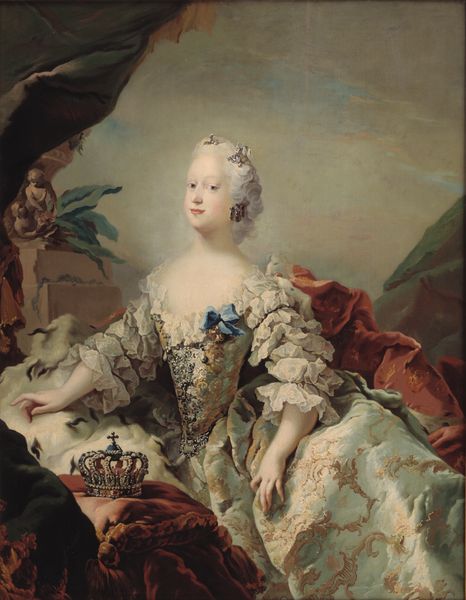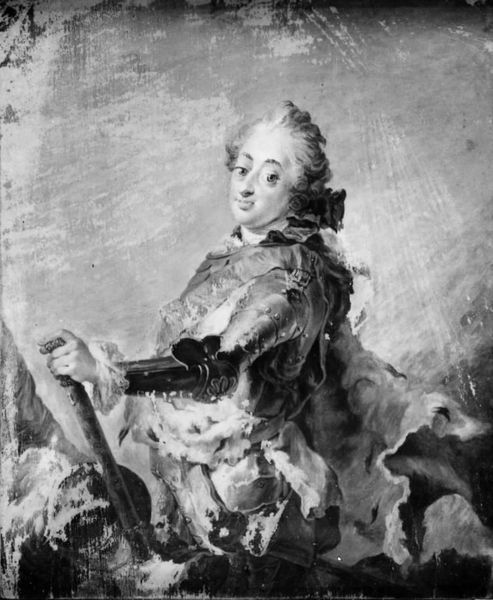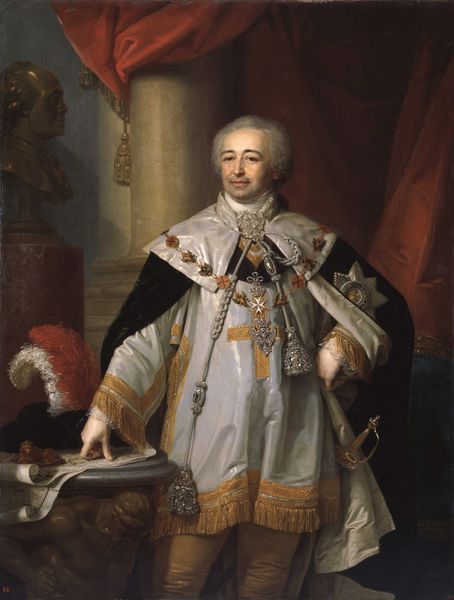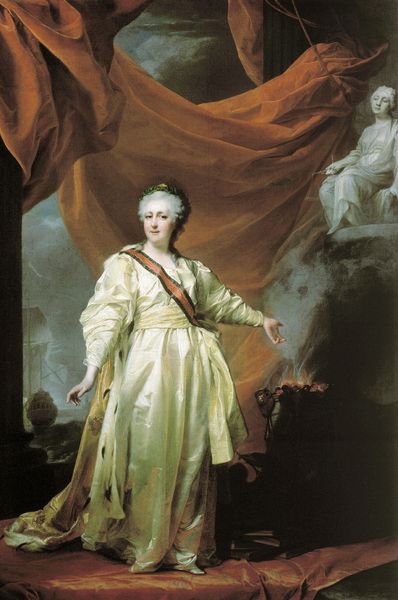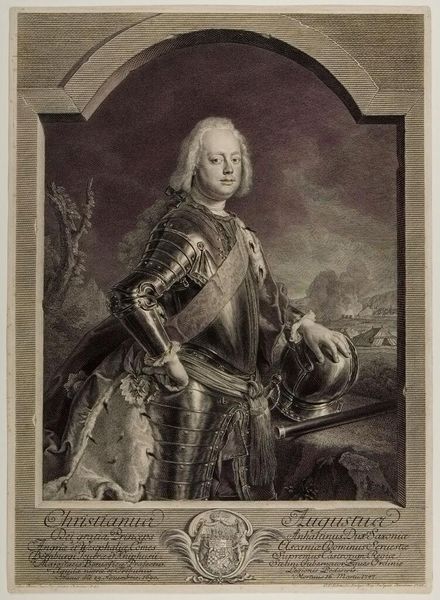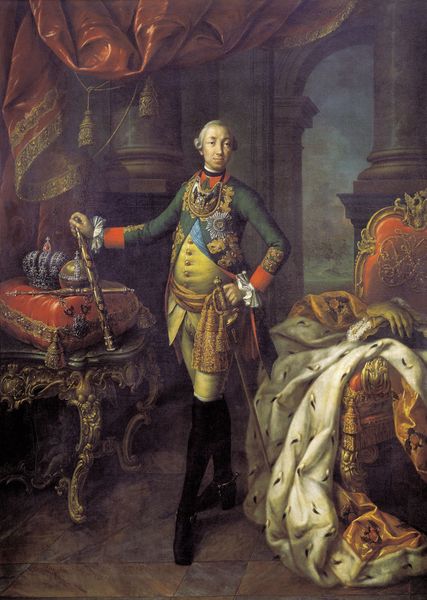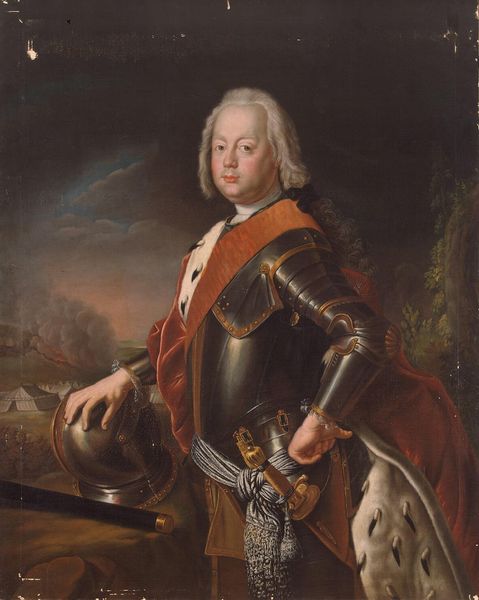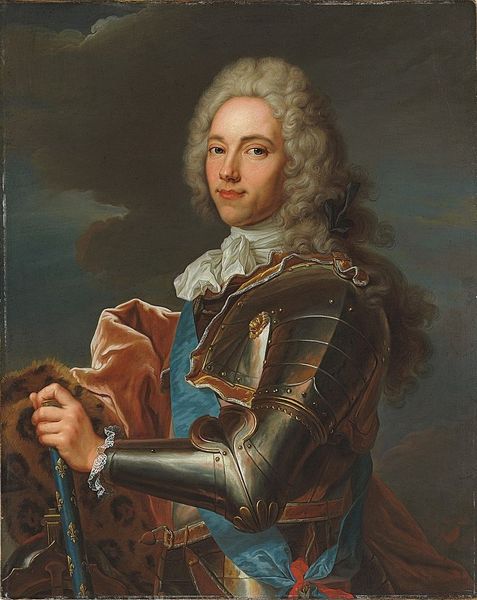
oil-paint
#
portrait
#
gouache
#
oil-paint
#
oil painting
#
history-painting
#
rococo
Dimensions: 231.5 cm (height) x 139.5 cm (width) (Netto)
Editor: Standing before us is C.G. Pilo's oil painting, "Portrait of Frederik V in Anointment Robe," created between 1748 and 1751. It's quite striking, almost theatrical in its presentation of the king. What aspects of the composition stand out to you? Curator: The piece exhibits a clear emphasis on texture and line. Note the delicate brushwork defining the ermine robe against the flatter application in the background. The composition uses a dynamic, almost Baroque diagonal, flowing from the upper left to the lower right. Observe also the stark contrast between the flowing lines of the robe and the rigid posture of the King. How do you believe these formal qualities impact our reading of the work? Editor: I think the textures make the King feel more present. Like you could almost reach out and touch the fur, while the diagonal makes the image feel active, rather than static like some portraits. It’s almost as if Pilo captured a moment in time, rather than just a likeness. Curator: Precisely. And that moment is orchestrated with intention. Consider the positioning of the crown, subtly placed to the side. The painter uses that device to reinforce a structural balance. How does the subdued palette further enhance this visual structure? Editor: I see what you mean. The softer colors really bring a harmony. It’s opulent, sure, but not gaudy or overwhelming because the colour range is restrained. It keeps everything grounded in a sense of refined order. It’s an interesting counterpoint to the lavish display of wealth and power. Curator: The painting exists not simply as an image, but as a complex interplay of visual components working in unison. Editor: I will definitely think more about the colour palettes and the structure of portraits when I look at them in future. Curator: And consider the painter’s choice of composition, texture, and line to draw viewers’ eyes, every element tells a story beyond representation.
Comments
statensmuseumforkunst almost 2 years ago
⋮
The Swedish artist C.G. Pilo became a court painter in the Danish royal household in 1747, the same year that Frederic 5. was anointed King. Pilo remained court painter until he left Denmark again in 1771.In 1660 the Danish monarchy went from being an elective monarchy to absolutism, and Danish kings were anointed rather than crowned.The anointing ceremonyDuring the ceremony, the king’s brow, chest, and right wrist were anointed, and indeed Pilo made reference to these specifics by letting the king’s brow catch the light and letting his right hand be ungloved.An illustration of the monarch's immortalityThe objective of the anointing was mainly to illustrate the immortality of the monarch irrespective of the fact that the ritual marked the accession of a new person to discharge the duties. The Crown was to be displayed in all its constancy and immutability. That is why King Frederic 5. is shown in a posture similar to the steps of the minuet, and Pilo presents both the symbols of the Throne and the details of the anointing ceremony.The setting for all this pomp and circumstance appears to go beyond any specific site: the undulating patterns of the anointing curtain is repeated in the folds of the ermine cloak, which in turn merges with the profusions of clouds and draperies in the background.
Join the conversation
Join millions of artists and users on Artera today and experience the ultimate creative platform.
statensmuseumforkunst almost 2 years ago
⋮
The Swedish-born court painter Pilo has depicted the absolute Danish monarch as elevated high above his subjects, surrounded by clouds and fluttering robes. The king has no equal, and he belongs to a different sphere than the common citizen. Frederik V is wearing his anointment robe, further accentuating his position. The anointment signifies that the monarchy is instituted by God. During the anointment the king would be daubed on his forehead, chest, and right wrist, and the painter refers to this by letting his forehead catch the light and leaving his right hand ungloved. Pilo strove for verisimilitude in his portraiture, but did not seek to provide an impression of Frederik V as a person. This is a portrait of a ruler, not an individual.
